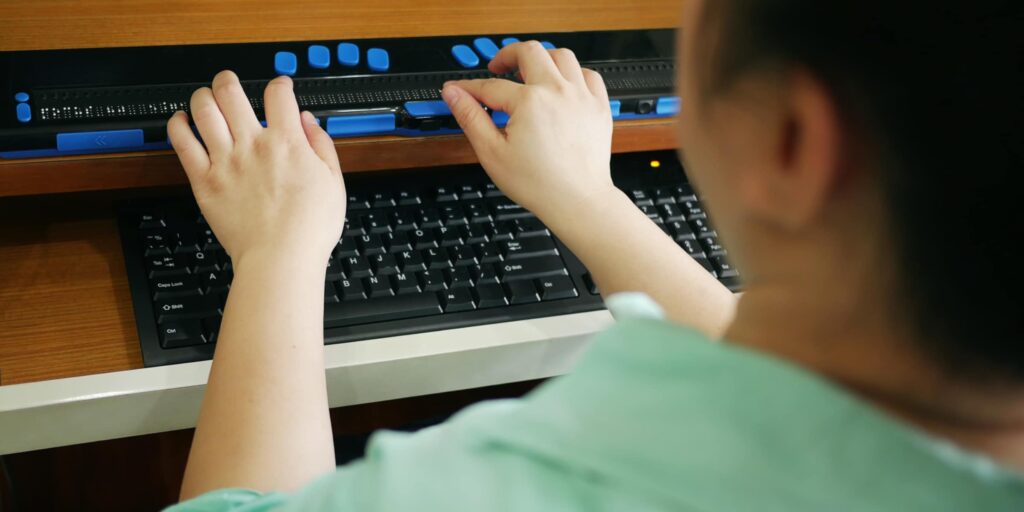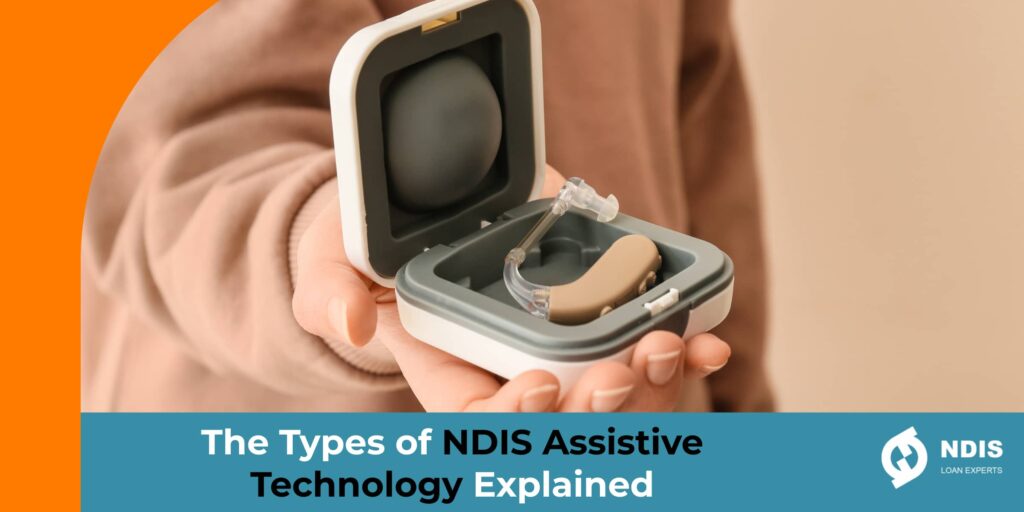Want to optimise your NDIS property investment returns while offering an exceptional living experience for tenants? We have good news; you can do both by incorporating assistive technology (AT)! Let’s explore the many types of assisted technology that can be integrated into your NDIS SDA homes.
Different types of assistive technology
Specialist Disability Accommodation (SDA) is all about creating homes specially designed to support people who need extra help living independently.
Depending on their needs, there are many ways to improve an NDIS property with AT to make day-to-day life and how they manage things at home easier for your tenant.
Different types of assistive technology include:
- Assistive technology for vision impairment.
- Assistive technology for hard of hearing.
- Assistive technology for mobility.
- Assistive technology for personal care.
- Assistive technology for home security.
There are different price levels of AT:
- Low cost assistive technology. Items costing less than $1,500.
- Mid cost assistive technology. $1,500 to $5,000 per item.
- High cost assistive technology. Over $5,000 per item.
Installing NDIS assistive technologies benefits NDIS participants and brings positive outcomes for NDIS property investors; it reduces vacancy risk, gives a competitive edge, and offers the potential for higher rental yields.
Assistive technology for vision
This type of AT is specifically designed to make life easier and more enjoyable for tenants with visual impairments.
Tactile signage and labelling: Having tactile cues throughout the home can help visually impaired tenants navigate their space with ease. Raised braille labels or embossed markings on doorways, light switches, kitchen appliances, and other items can provide tactile guidance, assist in orientation and promote independent living. This is low cost assistive technology that can make a huge difference to those living in the home.
Audible and vibrating alerts: Residents should be promptly notified of events or emergencies at home. That’s where audible and vibrating alert systems come in. From doorbell alerts to smoke detectors, carbon monoxide detectors, and motion sensors, these devices offer audible signals or vibrations, alerting NDIS participants to potential dangers or visitor arrivals. This technology not only improves life for tenants, but may even save their life!
Assistive technology for hard of hearing
If your tenant has difficulty hearing, these assisted technology ideas can help them feel more connected and comfortable in their SDA home:
Hearing loops, or Audio-Frequency Induction Loop Systems: These clever systems can be installed in the property to transmit sound directly to hearing aids or cochlear implants. By doing so, they make speech clearer and reduce background noise, improving communication for tenants.
Visual alert systems: Your tenant won’t miss calls, doorbells, and alarms! Visual alert systems utilise flashing lights or vibrations to notify tenants of incoming calls, visitors at the door, or important alarms.

Assistive technology for mobility
For those with mobility limitations, there’s a range of AT options to help tenants move around their homes easily. Features such as ramps, stairlifts, and widened doorways help promote independence and improve the overall quality of life.
Examples of assistive technology for mobility in the home include:
Ramps and handrails: Installing ramps and handrails can make a world of difference for tenants who need help accessing different levels of the property.
Automatic door openers: With a push of a button or a remote control, doors open and close effortlessly and it’s easy to move around the home. Automated garage doors also make entering and exiting with a car more simple and secure.
Stairlifts: Stairlifts provide a safe and effortless means of ascending and descending stairs, allowing a tenant to access different levels of their home easily. This is high cost assistive technology but can definitely be worth the investment!
Motorised blinds: Blinds are set to their desired level of light and privacy with a voice command or touch of a button. No physical effort is required for tenants to have privacy and control over their living space.
Lifestyle assistive technology
General assisted technology encompasses a wide range of solutions to make managing daily tasks easier.
Touch or voice activate appliances: By simply touching a button or issuing a voice command, tenants can operate kitchen appliances, entertainment systems, or other household devices without hassle.
Automated light switches: By tapping a button on their smartphone app, tenants can effortlessly control the lighting in their homes with smart lighting systems.
Assistive technology for personal care
Height-adjustable sinks and countertops: No more straining! With these adjustable features, it’s comfortable to use kitchen and bathroom facilities, regardless of an individual’s height or mobility limitations.
Smart toilets and bidets: With hands-free operation, customisable settings, and hygiene features, these devices promote independence and dignity in the bathroom.
Smart thermostats and voice-controlled temperature settings: For many high-needs NDIS recipients who struggle to regulate their own body temperatures, adjusting air conditioning temperature and fan speeds is crucial.
Smart thermostats or voice-controlled systems can provide an accessible way for tenants to maintain a comfortable living environment and promote their overall well-being.
Assistive technology for home security
Emergency call systems: These systems are essential for health and safety and can be voice-activated or triggered by a wearable device. Tenants have peace of mind that they can quickly call for help in an emergency.
Front door intercom systems: Front door intercom systems with audio and video capabilities mean tenants can easily communicate with visitors and grant or deny access to their home, helping them feel more secure and in control.
Investing in assistive technology for an NDIS Specialist Disability Accommodation home can be a win-win for everyone involved. You can create an accessible, supportive, and comfortable environment that truly caters to your tenants’ unique needs while increasing your investment’s profitability.
If you have questions about customising a SDA property with assistive technology, reach out to our team today.


